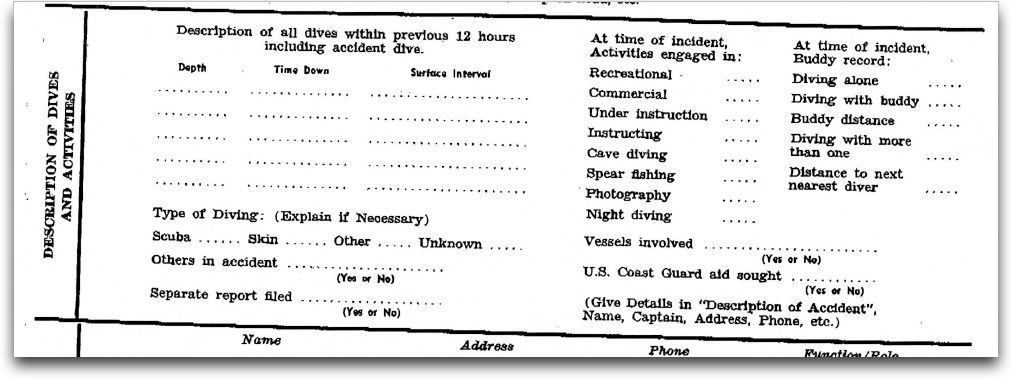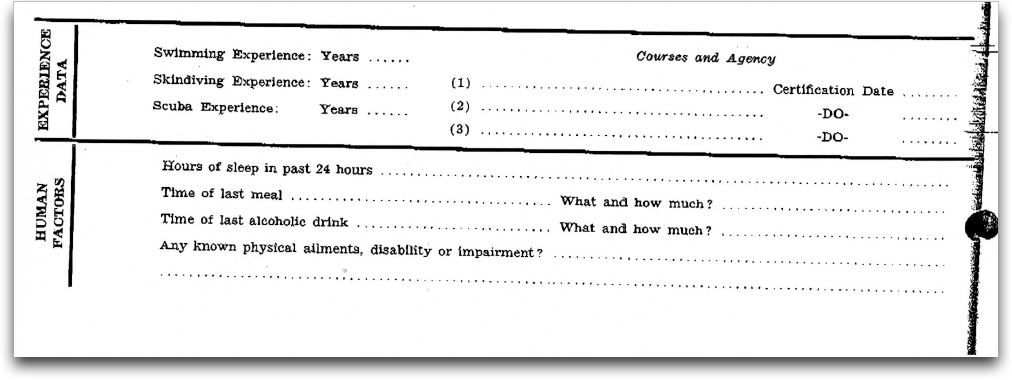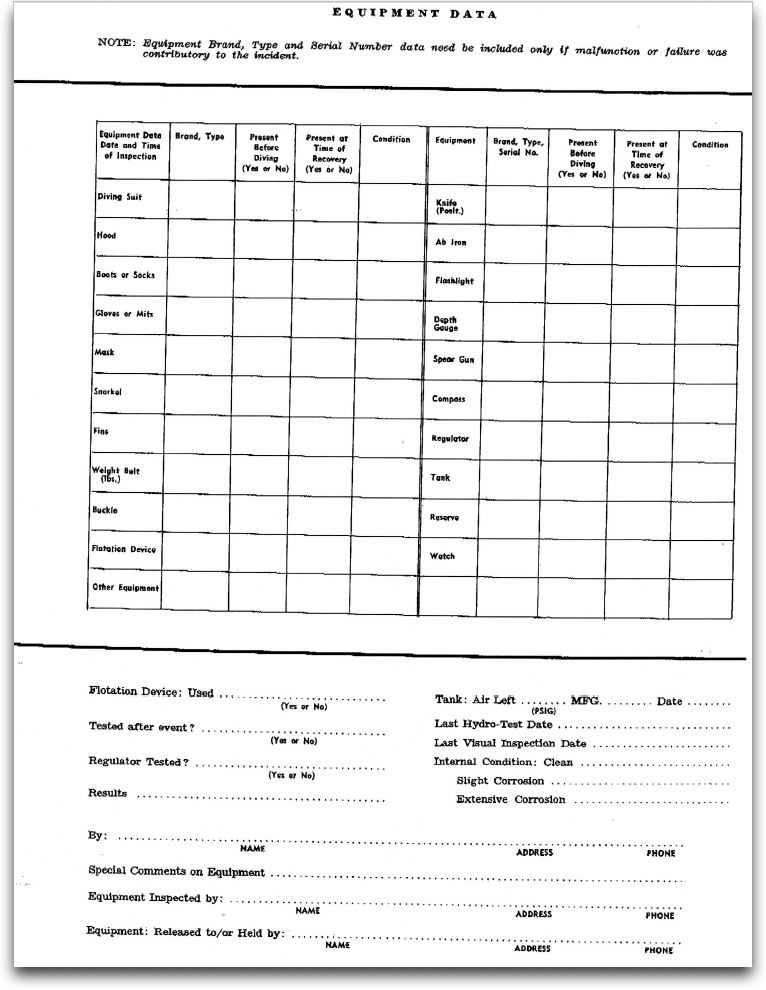Much frustration has been expressed in this thread that the root causes of accidents are hardly ever learned by the public.
Clearly, lots of responsible people want to mitigate future accidents.
Maybe we should look to the past to determine a better way forward.
History of Accident / Incident Report Forms
In 1973, the dive industry adopted an accident reporting form that was 6-pages. The form was designed to find
patterns, to mitigate future accidents.
MANY of the detailed questions / prompts have been eliminated on "modern" forms, by coordination between liability underwriters and training agencies.
Below are excerpts from the 6-page form.
In 1961 The Compressed Gas Association (CGA), began the "American National Standards on Underwater Safety," via the American National Standards Institute (ANSI).
Called the "Z86" project under ANSI, the Council for National Cooperation in Aquatics (CNCA) took over management of the Z86 project in 1968,
involving OVER SEVENTY separate organizations. Seven industry members and consultants created the "ANSI_Z-86.2-1973" Standard Underwater Accident Report Form,
drafted over a 4-year period and adopted in 1973 by the Z86 Underwater Safety Standards Committee.
ON FIRST PAGE OF THE 1973 Z86 FORM:
"...research completed has identified needed improvements in diving instruction, accident management
techniques, and equipment performance."
Please read the last line above, "To...improve the overall safety of diving"
30-years later, on PADI's Incident Reporting form (page 1):
...and again on page 3:
In 2009, a major insurance broker brags to the industry:
"Carol also revised incident reporting procedures to minimize information reported in order to reduce discovery of incident information."
But in the old days...
(Excerpts from the 1973 ANSI z86 form)
Specific call-outs prompt inputs vs. "modern" forms that only ask one single question, with little space for a response (e.g. "Surface Conditions"):
Specific questions RE buddy diving, and if the Coast Guard was notified (lacking on "modern" form):
Specific background RE swimming ability, and a "human factors" section (ENTIRELY missing on "modern" form):
Specific spots for itemizing equipment and condition of gear. But missing from this 1973 form:
Was air tested for CARBON MONOXIDE? If so, _______ ppm? (part-per-million).
And who had possession of the equipment after the accident?
Specific prompts to collect names and contact info for WITNESSES (entirely missing on "modern" form):












